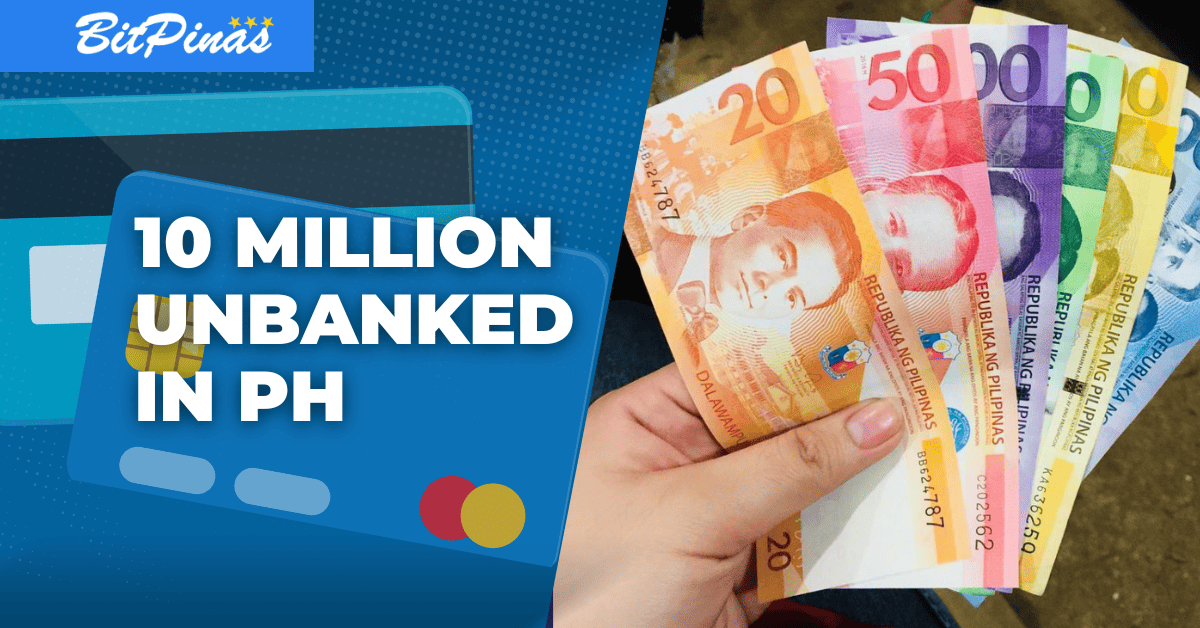10 Million Filipinos Remain Unbanked, World Bank Calls for Gov’t, Fintech’s Support
Of 1.4 billion people in the world who remain unbanked, 9.23 million of them are Filipino adults, according to the Global Findex Database 2021 report.

By Hans Doringo
With nearly 10 million Filipino still unbanked, World Bank urges the government, the private sector, and financial service providers to help address this banking challenge in the country.
Of 1.4 billion people in the world who remain unbanked, 9.23 million of them are Filipino adults, according to the Global Findex Database 2021 report.
Furthermore, in a survey of 1,000 Filipinos, the World Bank said only 51 percent of adults interviewed have bank accounts; 47 percent of women own bank accounts, and 34 percent of poot adults have accounts.
The said figures alarmed the World Bank, saying that efforts to expand access to financial services, including leveraging digital payments, should be undertaken.
“Digitalizing some of these payments could be cheaper and could reduce corruption for the government while bringing recipients into the formal financial system,” World Bank economists led by Saniya Ansar said in a Blog about the latest report.

“We already have evidence that this works,” the group said, as they mentioned the Global Findex 2021 report which found that 865 million account owners in developing economies opened their first financial institution account in order to receive money from the government.
The Washington-based lender said millions of adults in the world received government grants in cash only. In fact, in Cambodia and the Philippines, about 20 percent of unbanked adults—or about 10 percent of all adults—received government transfer payments in cash.
The World Bank, however, noted that more than 80 percent of the unbanked who received such payments in these economies have a mobile phone.
Furthermore, 36 percent of the adult population in the Philippines patronizes online shopping. However, despite the growing popularity of online shopping among consumers, three out of four online shoppers paid only in cash for their purchases.
The said figures indicate the growing digitization in the country that can be used by the government and private sectors as a tool to address the country’s “unbanked” problem. For example, access to financial services, specifically digital payments, can increase if companies use accounts to pay wages and salaries. Some 41 percent of wage earners in the Philippines received wages via bank accounts.
Meanwhile, the World Bank acknowledges the fact that access to financial services has gender, age, and income gaps. In terms of gender, there is an 8-percentage-point gap in account ownership in the Philippines; a 15-percentage-point gap in age; and a gap of over 20 percentage points in terms of income.
“As we seek to move out of the pandemic and as governments seek to consolidate the momentum and expand access to digital banking services, policies must factor in protections for the most vulnerable among us, including women, the poor and those with limited educational attainment or financial literacy,” the World Bank economists said.
In a field experiment conducted in the Philippines, it was discovered that women who used commitment savings products encouraged regular deposits into a personal account with a rural bank. This allowed them to spend on household goods relevant to their needs, such as washing machines.
The economists suggested that if women are given more access to financial services, they will be encouraged to open accounts and have voices in terms of household spending and decision-making.
Moreover, remittances through accounts also help increase access to financial services. The Philippines, according to World Bank, is among the countries that use bank accounts and money transfers to send or receive remittances from abroad.
The World Bank report stated that on average, some 14 percent of adults save either through saving cash at home or saving in the form of assets such as livestock, jewelry, or real estate. Expanding financial services to Filipino will help address some of their savings and investment concerns.
“In 26 developing economies, more than half of those who saved did so only using some other way. In the Philippines, for example, 30 percent of adults (55 percent of savers) saved in only some other way, making it one of the economies with the highest share of adults doing so,” the report stated.
This article is published on BitPinas: 10 Million Filipinos Remain Unbanked, World Bank Calls for Gov’t, Fintech’s Support





